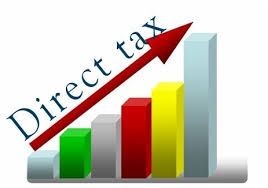Introduction to taxation: Ignorance about tax issues can kill your business (part 1)
 Introduction to taxation: Ignorance about tax issues can kill your business (part 1)
Introduction to taxation: Ignorance about tax issues can kill your business (part 1)
Tax is the most important source of governmental income in the modern economy. They are different from all other sources of income, such that they are compulsory, and are mostly not paid in exchange for something. Taxes are assumed to be paid for the welfare of the payers in the long run, but every individual’s upkeep is totally independent of the taxes received.
However, some taxes like payroll taxes are charged from the income of employees to cater for retirement benefits, security programs, and medical benefits. In some countries like the US, taxes are often called “contributions”, because of the relationship between the tax paid and the benefits enjoyed. The payment of tax is often compulsory for business owners in many countries, but not all taxpayers get to benefit from it.
Reason for taxation
- It finances the government.
- It helps in resource allocation and the economic stability of a nation.
- It allows the government to reduce the imbalances in the distribution of wealth.
- It helps to achieve the objectives of a nation’s economy.
Classes of Taxes
Taxes have been categorized in different ways according to those who pay, who bears most of the burden, and other standards. Generally, Taxes are classified onto two; Direct or Indirect taxes. Though it might be difficult to classify some kind of taxes, like corporate or property tax, these two are still the most efficient way to classify taxes.
Direct tax
Direct taxes are taxes that cannot be paid on behalf of someone else. It is majorly an individual tax and is measured based on an individual’s income, consumption, or gross wealth. This tax is charged in accordance with a person, or family’s total net worth of the taxpayer’s income. They are often adjusted to accommodate different circumstances that might affect the ability to pay at a particular time. Situations like financial issues arising from sickness, or the age and numbers of children in the family.
The taxes increase as the taxpayer’s income increases. At some point, the taxes might be reduced to the barest minimum that it looks like nothing is paid. Direct taxes are charged on the income that is not set apart for savings. It is charged on the total net worth of a person, that is, minus the liability. This form of tax that puts an individual’s situation into consideration is only common in India and Sri Lanka.
 Introduction to taxation: Ignorance about tax issues can kill your business (part 1)
Introduction to taxation: Ignorance about tax issues can kill your business (part 1)
Indirect tax
This kind of tax is charged based on the creation and consumption of goods, services, or other transactions. It includes VAT (Value-Added Tax), taxes on manufacturing and production, taxes on legal transactions, among others. Indirect taxes are levied on the production or consumption of goods and services or on transactions, including imports and exports. Examples include general and selective sales taxes, value-added taxes (VAT), taxes on any aspect of manufacturing or production, taxes on legal transactions, and customs or import duties. Indirect taxes are applied to a large range of products, and can also be paid at retail levels.
These taxes can be on the basic necessities of life, like consumables, jewels, or motor fuel. Some countries collect tax on gambling, and lottery centers, while others focus on things like machinery, or raw materials. Indirect tax can be measured based on the number, volume, or length of goods and services. It can also be measured based on the price. Taxes on legal transactions are based on the issue of shares, or the sale of lands and houses, or on a stock exchange.
Taxes can also be levied based on the effect they have on the effective dispersion of income and wealth. A progressive tax is defined by a rise in tax liability with respect to an increase in income. A regressive tax is defined by a less equal rise in income. A proportional tax is one in which the same amount of tax is levied on all taxpayers, regardless of the income or liabilities.
Progressive taxes can be seen as decreasing imbalances in the distribution of income, while regressive taxes are seen as increasing the imbalances. Income taxes and estate taxes are often categorized under the progressive tax. However, income taxes that are progressive can become less progressive if a taxpayer is allowed to reduce his tax by removing some income factors from his taxable income.
Some income is annual, and this does not give the best measure of paying tax. For instance, a regular increase in income can be saved, but when there are temporary reductions in income, a taxpayer may decide to focus on consumption by reducing his savings. Sales taxes ate sad to regressive. This is because the percentage of personal income spent on goods reduces as the level of income increases. Head taxes are also regressive taxes since they are based on a fixed amount per year.
As mentioned earlier, corporate tax and tax on business cannot be easily classified into any of the classes of tax. This is due to the skepticism of the ability of a business to change its tax payments.
Read Also: Top 10 Alternative Sources of Income In Nigeria
Concepts of tax rates
It is important to differentiate between various concepts of tax rates while considering the effects of taxation on the economy.
- Marginal income tax rates
These are the statutory rates restricted by law, they can also be average rates. Marginal income tax rates show the portion of the increase in income taken by taxation when dollar increases. This implies that if tax liability increases by 45 cents, and dollar increases by one, the marginal tax rate will be 45%. Income tax payments always include rated that increases as the income increases. Marginal rates reflect how income changes with respect to changes before the tax income. However, it is difficult to know the marginal effective tax rate used for businesses and capital, because they depend on provisions for inflation, or the system of depreciation income.
 Introduction to taxation: Ignorance about tax issues can kill your business (part 1)
Introduction to taxation: Ignorance about tax issues can kill your business (part 1)
- Average income tax rates
This includes the percentage of total income paid in taxation. Average income tax increases with an increase in income, because personal incomes are made available for the taxpayer, and all that depends on him. The effects will thus be seen on those with high incomes. The basis of the average tax rate is one that is related to the equal distribution of income.
Hope you enjoy this article?
Share your thoughts in the comment session.
Contact us today for your business consultancy and business advisory services. We can help you fine tune your idea, structure your business, market your business, train your staff, consult on your retirement plan, coach you for financial success. We also write business plan and help with fund raising strategies and Grant applications. We can help you start, grow and expand your business.
Call or WhatsApp us now on 081 0563 6015, 080 7635 9735, 08113205312 or send email to dayohub@gmail.com and we will solve any of your business problem.
Related